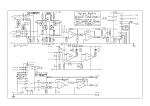"Now, one of the issues I know with Behringer is inconsistency so it's entirely possible you got a good'un. But personal experience is that you cannot count on this."
I would suggest that you might have got a bad 'un! I also had a Berry BCA2000 AI and the mic amps on that were even better I would say than the 802. I also have a Wharfedale mixer (that is only used to "collect" soundcard outputs and squirt them to my Tannoys) and the mic pres on that are remarkably quiet and it almost certainly uses the same, generic micamp circuitry as the Behringers (despite their claims, they did NOT invent it! been on the infernalnet for years!) .
But! I have a couple of days off and the car is in the shop (MOT) so I will check some stuff with me trusty Levell microvoltmeter!
I would always advocate BTW that noobs get a capacitor (SMD) mic, at least to start with. Many AIs and mixers will struggle for noise free gain on say acoustic guitar with an SM57.
Dave.
I would suggest that you might have got a bad 'un! I also had a Berry BCA2000 AI and the mic amps on that were even better I would say than the 802. I also have a Wharfedale mixer (that is only used to "collect" soundcard outputs and squirt them to my Tannoys) and the mic pres on that are remarkably quiet and it almost certainly uses the same, generic micamp circuitry as the Behringers (despite their claims, they did NOT invent it! been on the infernalnet for years!) .
But! I have a couple of days off and the car is in the shop (MOT) so I will check some stuff with me trusty Levell microvoltmeter!
I would always advocate BTW that noobs get a capacitor (SMD) mic, at least to start with. Many AIs and mixers will struggle for noise free gain on say acoustic guitar with an SM57.
Dave.

 ) are a better bet unless you pay for better-than-entry-level pre amps.
) are a better bet unless you pay for better-than-entry-level pre amps.
 OK from reading this as a newbie beginner looking to get started i know i don't need or want a mixer. Where do i go from here? I am just starting to go through the forum maybe the answer is buried deep in there.
OK from reading this as a newbie beginner looking to get started i know i don't need or want a mixer. Where do i go from here? I am just starting to go through the forum maybe the answer is buried deep in there.